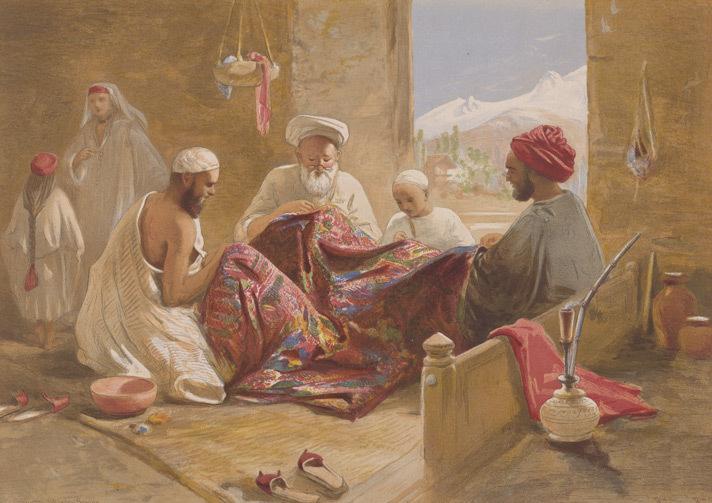ملف:Shawl makers in Kashmir (1867).jpg
Shawl_makers_in_Kashmir_(1867).jpg (712 × 503 بكسل حجم الملف: 55 كيلوبايت، نوع MIME: image/jpeg)
تاريخ الملف
اضغط على زمن/تاريخ لرؤية الملف كما بدا في هذا الزمن.
| زمن/تاريخ | صورة مصغرة | الأبعاد | مستخدم | تعليق | |
|---|---|---|---|---|---|
| حالي | 18:10، 17 مايو 2011 |  | 712 × 503 (55 كيلوبايت) | Woudloper | {{Information |Description={{en|This chromolithograph is taken from plate 2 of William Simpson's 'India: Ancient and Modern'. 1867. Europeans prized cashmere shawls for the softness and warmth of the wool, the rich colours, the intricacy of the weave and |
استخدام الملف
الصفحتان التاليتان تستخدمان هذا الملف:
الاستخدام العالمي للملف
الويكيات الأخرى التالية تستخدم هذا الملف:
- الاستخدام في be.wikipedia.org
- الاستخدام في bn.wikipedia.org
- الاستخدام في en.wikipedia.org
- الاستخدام في fa.wikipedia.org
- الاستخدام في fr.wikipedia.org
- الاستخدام في gu.wikipedia.org
- الاستخدام في hy.wikipedia.org
- الاستخدام في kn.wikipedia.org
- الاستخدام في mr.wikipedia.org
- الاستخدام في nl.wikipedia.org
- الاستخدام في pa.wikipedia.org
- الاستخدام في pl.wiktionary.org
- الاستخدام في pnb.wikipedia.org
- الاستخدام في ro.wikipedia.org
- الاستخدام في ru.wikipedia.org
- الاستخدام في sa.wikipedia.org
- الاستخدام في sr.wikipedia.org
- الاستخدام في ta.wikipedia.org
- الاستخدام في te.wikipedia.org
- الاستخدام في uk.wikipedia.org

